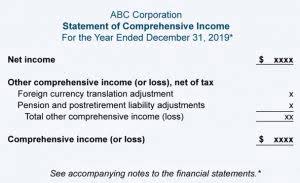A Step-by-Step Guide to Calculating an Asset’s Salvage Value

This graph compares asset value depreciation given straight line, sum of years’ digits, and double declining balance depreciation methods. Original cost of the asset is $10,000, salvage value is $1400, and useful life is 10 years. Salvage value is important in accounting as it displays the value of the asset on the organization’s books once it completely expenses the depreciation.
- For example, if a company sells an asset before the end of its useful life, a higher value can be justified.
- Straight line depreciation gives you the same depreciation expense for each year of asset use.
- The disposal value, also known as gross proceeds, is the amount received when selling or disposing an asset.
- Once you’ve determined the asset’s salvage value, you’re ready to calculate depreciation.
If a company believes an item will be useful for a long time and make money for them, they might say it has a long useful life. The company estimates that the computer’s useful life is 4 years. This means that the computer will be used by Company A for 4 years and then sold afterward. The company also estimates that they would be able to sell the computer at a salvage value of $200 at the end of 4 years.
How to determine an asset’s salvage value
You can get back your cost of certain property, such as equipment you use in your business or property used for the production of income by taking deductions for depreciation. Let’s figure out how much you paid for the asset, including all depreciable costs. GAAP says to include sales tax and installation fees in an asset’s purchase price.
Senate moves windmill tax bill — West Virginia MetroNews
Senate moves windmill tax bill.
Posted: Tue, 23 Jan 2024 08:00:00 GMT [source]
The Tax Counseling for the Elderly (TCE) program offers free tax help for all taxpayers, particularly those who are 60 years of age and older. TCE volunteers specialize in answering questions after tax salvage value about pensions and retirement-related issues unique to seniors. An employer who provides more than five vehicles to employees need not include any information on his or her tax return.
Formula and Calculation of Salvage Value
With a large number of manufacturing businesses relying on their machinery for sustained productivity, it is imperative to keep assessing the equipment they own. Constant use and other factors like the nature and quality of these assets cause a continual deterioration. Salvage value is the estimated amount that a company expects to receive for an asset at the end of its useful life, after accounting for depreciation. The following tables are for use in figuring depreciation deductions under the ACRS system.
A written explanation of the business purpose will not be required if the purpose can be determined from the surrounding facts and circumstances. For example, a salesperson visiting customers on an established sales route will not normally need a written explanation of the business purpose of his or her travel. For listed property, records must be kept for as long as any excess depreciation can be recaptured (included in income). For most other changes in method of depreciation, you must get permission from the IRS.
Values Needed to Calculate Depreciation
When this occurs, the changed basis is called the adjusted basis. Events such as deducting casualty losses and depreciation decrease basis. If basis is adjusted, the depreciation deduction may also have to be changed, depending on the reason for the adjustment and the method of depreciation you are using. If you physically abandon property, you can deduct as a loss the adjusted basis of the asset at the time of its abandonment. Your intent must be to discard the asset so that you will not use it again or retrieve it for sale, exchange, or other disposition. For 19-year real property, the alternate recovery periods are 19, 35, or 45 years.

After you determine that your property can be depreciated under ACRS, you are ready to figure your deduction. Because the conventions are built into the percentage table rates, you only need to know the following. This publication describes the kinds of property that can be depreciated and the methods used to figure depreciation on property placed in service before 1987. The depreciation journal entry accounts are the same every time — a debit to depreciation expense and a credit to accumulated depreciation.
What Is Salvage Value vs. Book Value?
Consider all these factors before you arrive at a useful life for your property. You can still calculate depreciation without a salvage value; just put a $0 in any place where you need to enter a salvage value. You might learn through research that your asset will be worthless at the end of its useful life. If that’s the case, your salvage value is $0, and that’s perfectly acceptable. Useful life is the number of years your business plans to keep an asset in service. It’s just an estimate since your business may be able to continue using an asset past its useful life without incident.
It uses the straight-line percentage on the remaining value of the asset, which results in a larger depreciation expense in the earlier years. So, when a company figures out how much something will lose value over time (depreciation), they also think about what it might still be worth at the end, and that’s the salvage value of that asset. First estimate the asset’s salvage value which is the residual value of an asset at the end of its useful life. Then subtract the salvage value from the initial cost of the asset. Divide the result, which is the depreciation basis, by the number of years of useful life.


Всего комментариев: 0